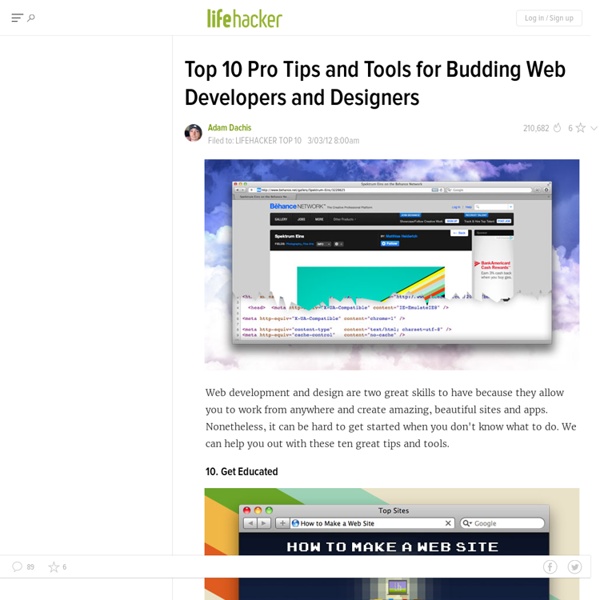



GoMo: An Initiative From Google Parsimony CMS Email Marketing and Email List Manager | MailChimp 15 Quality Web-Based Applications to Create Mock-Ups and Wireframes To effectively manage a project with very little mistakes, you must make it a priority to plan. Diving into the development process with not a single clue as to what elements go where or how certain aspects of a websites interface differ from one another is dooming yourself to hard-earned headaches. For as long as humans have been able to hold a pen and a paper in hand, we have been prototyping and although different from now, “wireframing“. This dates back to thousands of years ago when architects and artists began converting their artwork into an actual physical presence. This is to outline that we are no strangers to the planning, prototyping, and executing process. What are Wireframes, Really? A wireframe in essence, is a visual representation, guide, and basic element structure of a websites interface design. Below we’ve compiled great web-based applications to create mock-ups and wireframes. Tools and More Tools Hot Gloo Mockingbird Pencil Project ProtoShare Balsamiq Flair Builder Cacoo
About What is Media Queries? Media Queries is a W3C Candidate Recommendation—a widely reviewed document which is ready for implementation by browser vendors. It's an extension of media dependent stylesheets tailored for different media types (i.e. screen and print) found in CSS2. In its essence a media query consists of a media type and an expression to check for certain conditions of a particular media feature. By restricting CSS rules to a certain width of the device displaying a web page, one can tailor the page's representation to devices (i.e. smartphones, tablets, netbooks, and desktops) with varying screen resolution. What is Responsive Web Design? The term Responsive Web Design was coined by Ethan Marcotte and is the practice of using fluid grids, flexible images, and media queries to progressively enhance a web page for different viewing contexts. What screen resolutions do you use while taking screenshots? Smartphone 320px Tablet 768px Netbook 1024px Desktop 1600px Yes: mediaqueri.es/all.txt.
Comment devenir Webdesigner ? #3 Les notions à connaître - Blog Du Webdesign Magazine Voici un nouveau numéro de notre dossier avec cette semaine un zoom sur les différents domaines à connaître ainsi que les logiciels à maîtriser pour être Webdesigner. Vous trouverez également des ressources et liens pour compléter ce sujet Il est dur de retranscrire les connaissances que doit posséder un webdesigner car chaque personne est différente et a un parcours unique qui crée ainsi une diversité dans le monde du travail... L’autre difficulté est que nous devons maîtriser des domaines très larges qui vont des bases du graphisme aux nouvelles technologies. Ainsi vous trouverez dans cet article les différentes notions qui sont utiles d’avoir pour le travail. Pour pratiquer le métier de webdesigner il faut plusieurs cartes dans son jeu au niveau des connaissances et des domaines à maîtriser. Voici un petit tour des grands domaines que doit prendre en compte le webdesigner pour pouvoir effectuer les différentes tâches auxquelles il devra faire face. Nature by Numbers Kuler Autres sites
Scrapy – Un framework dédié au crawl et à l’extraction de données en ligne Si votre passion dans la vie, c'est de programmer des bots qui vont crawler des sites web pour en extraire le contenu afin d'alimenter vos propres bases données, vous serez surement heureux de découvrir Scrapy ? Ce framework dédié au parcours de site et à l'extraction de données structurées dans les pages web peut être utilisé dans de nombreuses situations... Par exemple pour faire du monitoring, extraire des liens, ou encore récupérer du contenu éditorial...etc. Scrapy est léger, facile à comprendre (ça utilise du Xpath et un système de règles), et fonctionne sous Windows, Linux, Mac, BSD...etc (c'est du Python). Toute la doc et le soft sont disponibles sur le site officiel de Scrapy. Vous avez aimé cet article ?
Useful Glossaries For Web Designers and Developers - Smashing Magazine Advertisement In a day in age where there are just as many freelancers as there are university educated designers, developers, and all around web gurus, it is amazing to me how much many of us don’t know or have forgot about our trade. As a self-taught designer, I will admit to you upfront that there is a lot I don’t know when it comes to official jargon or certain aspects of things like typography and graphic design. It is these reasons that I call upon glossaries from time to time. These glossaries are also especially useful for those of you who are just getting started in the online business world. But glossaries aren’t just for brushing up on old terms or for calling upon while you learn new things. Last week we presented Web Design Industry Jargon: Glossary and Resources1, a general guide to industry terms that should get you well on your way to understanding what web designers are talking about. Typography Glossaries Usability, UX and IA Glossaries Marketing Glossaries SEO Glossaries